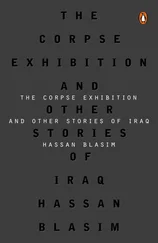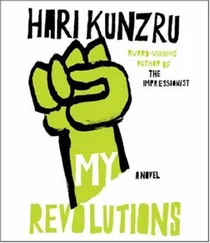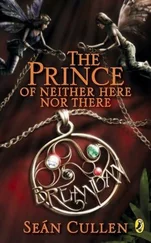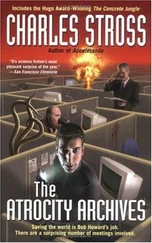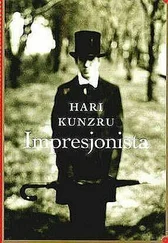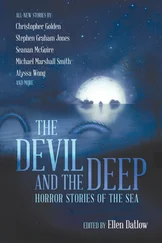As Moorcock’s memory of Ballard’s living-room cut-ups suggests, the origins of The Atrocity Exhibition don’t lie in traditional techniques of prose composition. In 1958 Ballard had taken a job as an editor at Chemistry and Industry magazine, which he held until 1964. Almost as soon as he got there, he began to use materials in the office to make photocopied collages which he later described as ‘sample pages of a new kind of novel, entirely consisting of magazine-style headlines and layouts, with a deliberately meaningless text, the idea being that the imaginative content could be carried by the headlines and overall design, so making obsolete the need for a traditional text except for virtually decorative purposes.’ Many words and phrases from this Project for a New Novel turn up in The Atrocity Exhibition , notably the sequence ‘Kline – Coma – Xero’ which become something more than proper names, something slightly less (or more diffuse) than characters.
Ballard’s most frequently acknowledged aesthetic debt is to Surrealism. In The Atrocity Exhibition , his references are usually visual – to Ernst and Dalí, Yves Tanguy. Indeed, as he told an interviewer, ‘I originally wanted a large-format book, printed by photo-offset, in which I would produce the artwork – a lot of collages, material taken from medical documents and medical photographs, crashing cars and all that sort of iconography.’ Though Ballard also namechecks contemporary American artists (Ed Kienholz, Tom Wesselmann) one of the few writers he references is Raymond Roussel, inventor of what are probably best thought of as textual algorithms, game-machines for producing narrative. Using a tool-kit based on puns, homonyms and various kinds of combination and shuffling, Roussel would, for example, create an opening and an ending for a passage or story, often generating them by changing as little as a single letter. For example, in ‘Parmi les noirs’ , Roussel changes ‘ Les lettres du blanc sur les bandes du vieux billard ’ (the white letters on the cushions of the old billiard table) to ‘ les lettres du blanc sur les bandes du vieux pillard’ (the letters of a white man about the hordes of the old plunderer) and journeys from the first image to the second.
Admired by the Surrealists, lovers of automatism in all its forms, Roussel’s writing machines seem to open a road towards a poetry of the unconscious. Ballard’s various automatisms are directed towards a similar end, though for him, access to the unconscious is not straightforwardly liberating. Apart from the collages and cut-ups, Ballard also used found text, such as surgical instructions and scientific papers, into which he inserted the names of celebrities to produce pieces like ‘Princess Margaret’s Facelift’ and ‘Mae West’s Reduction Mammoplasty’. Automatism is liberating, yes, but also sinister. The Atrocity Exhibition is a cousin of A Clockwork Orange and The Manchurian Candidate , books that display a deep anxiety about behaviorism, conditioning and free will. By the sixties, ideas about computing were beginning to percolate out into the wider culture, particularly through the newly fashionable discourse of cybernetics. Suddenly, it was apparent that information and control systems were embedded in the biology of the human organism, as well as into various forms of technology (notably missile guidance), a fact which made cybernetics key to the conduct of the Cold War. It was now open to conceptualize the media in an analogous way as a technology of control, a sort of guidance system which could be used to direct consumers towards desired goals. During the period he was working on The Atrocity Exhibition and Crash , Ballard (who had briefly worked at an ad agency) published a series of ‘Advertisers Announcements’ in Ambit. He conceived of these spreads in a conceptually rigorous way, to the extent of paying the magazine’s ad rate for the pages. ‘Fiction,’ reads the text of one, ‘is a branch of neurology.’
‘Does the Angle Between Two Walls Have a Happy Ending?’ asks the headline to the same 1967 piece, over a black-and-white image of a female body, actually a still from Alone , the American filmmaker Stephen Dwoskin’s 1964 film about a masturbating woman. The ‘happy ending’ is of course a joke about commercial narratives and commercial sex. The phrase ‘the angle between two walls’ turns up several times in The Atrocity Exhibition, along with imagery of intersecting planes and the mathematical modulus. Always Ballard is interested in the junction between incommensurable systems, a point of identity where they link or double up. Limestone formations in Spain connect the human spine, the primitive evolution of consciousness and the geology of the external world. The celebrity car crash is a complex fetishistic modulus in which the media, technology and the suffering human body wrap round each other; the subject, conditioned by repeated exposure to these stimuli and their association with sexual pleasure and pain, learns to respond with arousal and fear. Ballard’s fiction isn’t a weightless postmodern system of equivalences, a skating rink on which signs slip over signs. Rather it’s a system of identities that trigger passage from one order of experience to another, a physical business of blood and nerve endings that can seamlessly shift to flickering images on a screen.
Above all, The Atrocity Exhibition is a melancholy book, fixated on something terrible that it can’t let go. Its landscape is both dead and accelerating, a windblown desert strewn with the wreckage of modernity that is at the same time a place of unbearable speed and intensity. In 1964 Ballard’s wife Mary died suddenly of pneumonia, leaving him to bring up their three children alone. In 2007, when he was already terminally ill, I interviewed him. ‘I was terribly wounded by my wife’s death,’ he told me. ‘Leaving me with these very young children, I felt that a crime had been committed by nature against this young woman – and her children – and I was searching desperately for an explanation … To some extent The Atrocity Exhibition is an attempt to explain all the terrible violence that I saw around me in the early sixties. It wasn’t just the Kennedy assassination … I think I was trying to look for a kind of new logic that would explain all these events.’
New York, January 2014
My sources for this essay are personal communications with Michael Moorcock and Marc Haefele, my interview with JGB (collected in Extreme Metaphors: Interviews with J. G. Ballard 1967–2008, edited by Simon Sellars and Dan O’Hara) and essays by Mike Bonsall, Mike Holliday and Rick McGrath, all to be found on Ballardian.com. Raymond Roussel’s own explanation of ‘Parmi les noirs’ can be found in How I Wrote Certain of My Books, translated by Trevor Winkfield .
Конец ознакомительного фрагмента.
Текст предоставлен ООО «ЛитРес».
Прочитайте эту книгу целиком, купив полную легальную версию на ЛитРес.
Безопасно оплатить книгу можно банковской картой Visa, MasterCard, Maestro, со счета мобильного телефона, с платежного терминала, в салоне МТС или Связной, через PayPal, WebMoney, Яндекс.Деньги, QIWI Кошелек, бонусными картами или другим удобным Вам способом.

